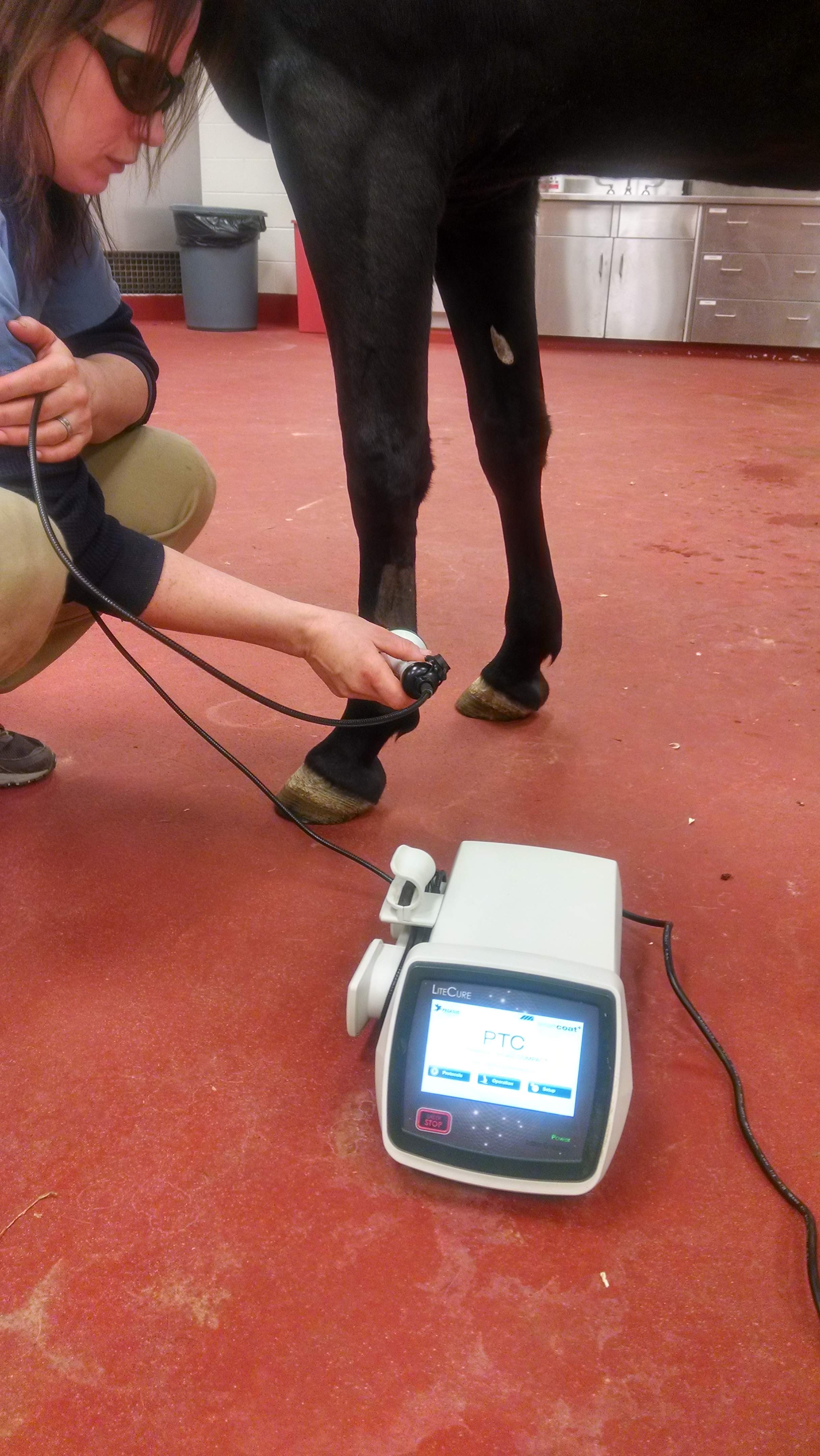Equine Therapy Programs: Transforming Lives One Adventure each time
Equine Therapy Programs: Transforming Lives One Adventure each time
Blog Article
How Laser Treatment in Equine Therapy Is Reinventing Veterinary Take Care Of Equines
Laser therapy has actually emerged as a transformative strategy in equine vet care, giving a non-invasive option that expedites recovery and boosts overall health. The transportability and convenience of laser treatment tools even more underscore their expanding indispensability among vets.
Recognizing Laser Treatment

The technology behind laser therapy is grounded in the principle of photochemistry, where photons are taken in by chromophores within cells, bring about increased ATP manufacturing and modulation of responsive oxygen varieties (Equine Therapy). This, consequently, promotes cellular spreading, decreases swelling, and accelerates recovery. Veterinary practitioners utilize different kinds of lasers, including low-level lasers (LLLT) and high-power Class IV lasers, depending on the particular therapeutic purposes and the nature of the equine condition being dealt with
Various laser wavelengths and power settings are thoroughly chosen to target various cells midsts and achieve desired clinical outcomes. Security protocols are vital, as inappropriate use can cause thermal damage or suboptimal restorative impacts. Hence, an extensive understanding of laser therapy's devices and applications is essential for its reliable execution in equine veterinary practice.
Advantages for Horse Health And Wellness
The myriad advantages of laser treatment for equine health include boosted recovery, discomfort reduction, and improved movement. This sophisticated therapy technique leverages details wavelengths of light to pass through tissues, promoting mobile function and promoting quick cells repair. The non-invasive nature of laser therapy makes certain marginal stress and discomfort for the equine, facilitating a smoother recuperation process.
Enhanced healing is one of the primary advantages, as laser treatment increases mobile regrowth and collagen synthesis. Discomfort decrease is accomplished through the anti-inflammatory impacts of laser therapy, which decreases swelling and decreases the production of pain-inducing chemicals.
Better wheelchair is an additional essential benefit, particularly for efficiency and functioning equines. By decreasing swelling and discomfort, and enhancing tissue repair service, laser treatment aids in restoring joint function and muscle adaptability. The collective impact of these benefits is not only a quicker go back to typical activity but additionally an overall enhancement in the steed's lifestyle. Hence, laser treatment stands as a transformative tool in contemporary horse veterinary care.
Usual Problems Treated
Laser therapy has emerged as a functional treatment option for a selection of usual equine problems. Among these, musculoskeletal injuries are particularly open Discover More Here to laser therapy. Equine Therapy. Soft cells injuries, such as tendonitis and tendon pressures, take advantage of the anti-inflammatory and analgesic results of laser therapies, which accelerate recovery and decrease pain. In addition, laser treatment works for conditions like osteo arthritis, where it helps minimize joint swelling and advertise cells repair.
Wound monitoring is another area where laser treatment has shown significant promise. Chronic wounds or slow-healing ulcers can be particularly challenging in steeds, however laser therapy boosts cellular regrowth and boosts blood flow, hence accelerating the healing procedure. Furthermore, laser therapies have actually been successfully used in managing unguis conditions such as laminitis and abscesses, minimizing discomfort and advertising faster recovery.

Technology Behind Laser Therapy
Beyond the myriad problems treatable with laser treatment, the technology itself values useful reference better assessment. At the heart of laser therapy is the usage of particular wavelengths of light to penetrate tissues and evoke biological actions. These wavelengths, normally varying from 600 to 1000 nanometers, are precisely absorbed by chromophores in the skin, muscular tissue, and various other tissues, instigating a waterfall of mobile occasions.
Laser tools made use of in vet medicine usually utilize low-level laser treatment (LLLT) or cold laser treatment. Unlike high-powered medical lasers, these devices run at lower power levels, optimizing restorative advantages while lessening thermal damage. The energy from the laser light boosts adenosine triphosphate (ATP) production, improves mobile metabolism, and accelerates cells repair service processes.

Success Stories and Study

Showcasing the tangible advantages of laser therapy, various success stories and study illuminate its transformative effect on equine wellness. One such situation includes a pureblooded racehorse suffering from chronic tendonitis. Conventional treatments generated marginal improvement, yet after integrating laser therapy right into the regimen, the equine showed substantial reductions in inflammation and discomfort within weeks, eventually going back to competitive auto racing.
Another compelling instance features a dressage horse detected with extreme pain in the back, restricting its efficiency. A veterinary group utilized low-level laser therapy (LLLT) to target the inflamed locations, leading to significant improvement in flexibility and a significant decline in pain. Over numerous sessions, the horse restored its peak form, showcasing the efficacy of laser therapy in addressing musculoskeletal problems.
Furthermore, a research study performed at a leading equine center analyzed 50 steeds with various soft cells injuries treated with laser treatment. The results stood out: 85% of the equines demonstrated accelerated recovery times and improved flexibility. These situations highlight the adaptability and performance of laser therapy in equine medicine, using a non-invasive, scientifically-backed technique to boosting recovery and efficiency in horses.
Conclusion
Laser treatment is transforming equine veterinary care by providing a non-invasive therapy that accelerates recovery, decreases inflammation, and reduces discomfort. With its efficiency in dealing with a series of conditions, from musculoskeletal injuries to chronic disorders like osteoarthritis, this modern technology significantly improves equine health and flexibility. The portability and adaptability of laser treatment better underscore its transformative effect on vet techniques, strengthening its role as a necessary device in modern-day equine healthcare.
Report this page